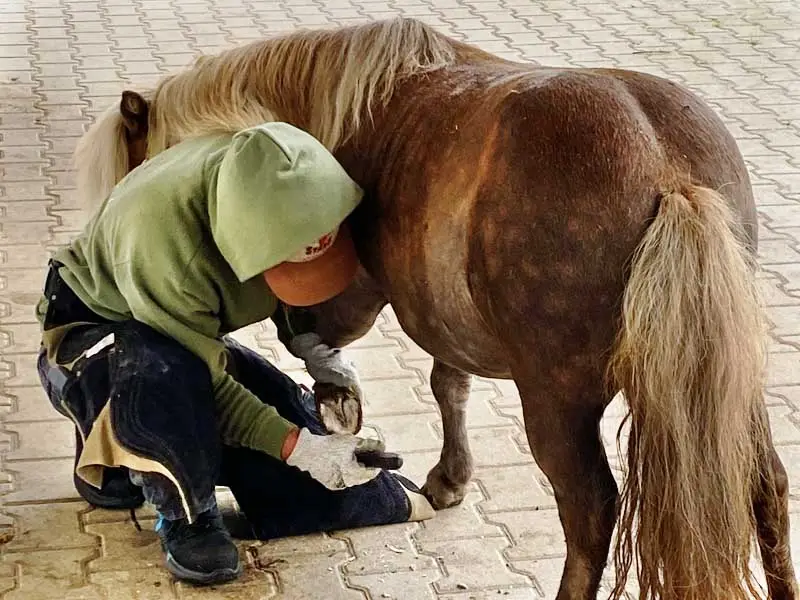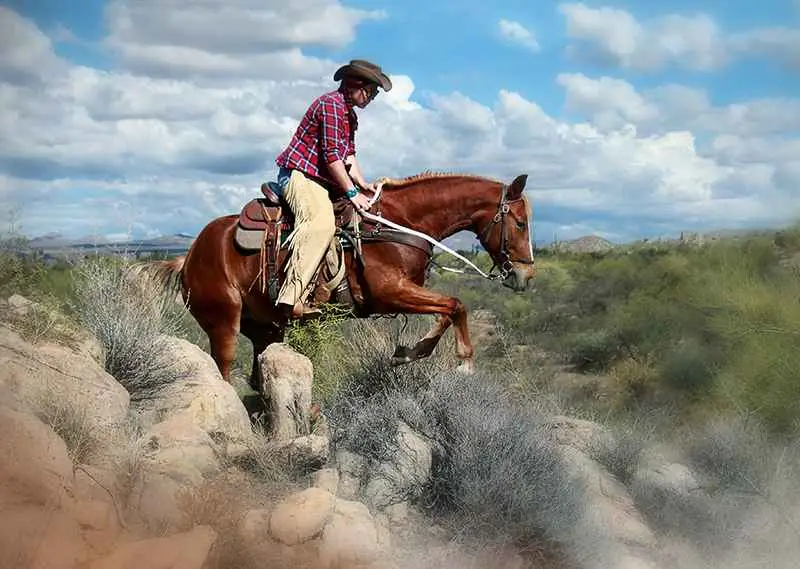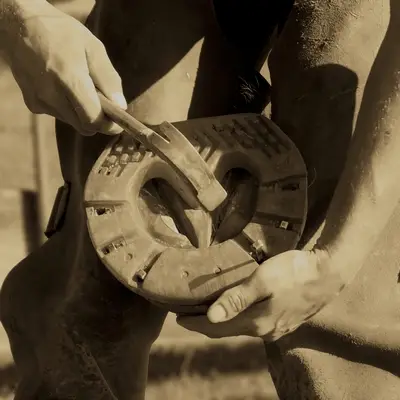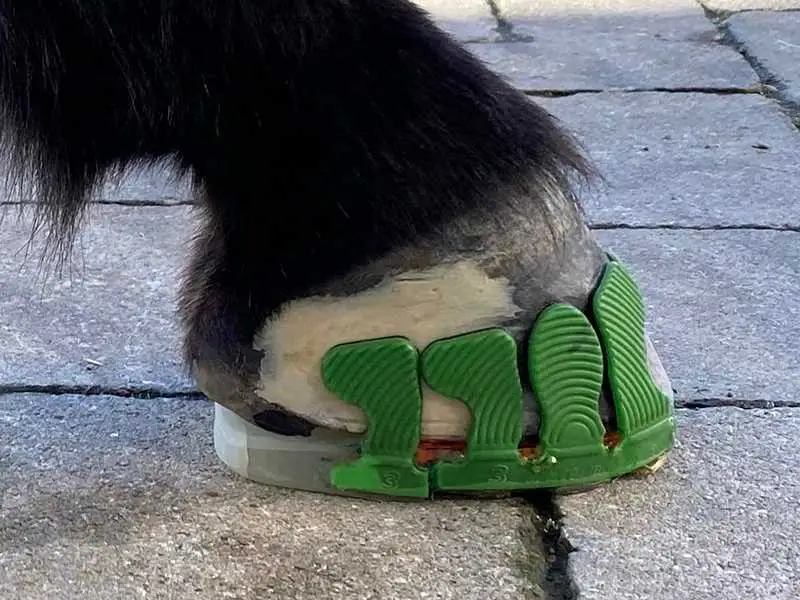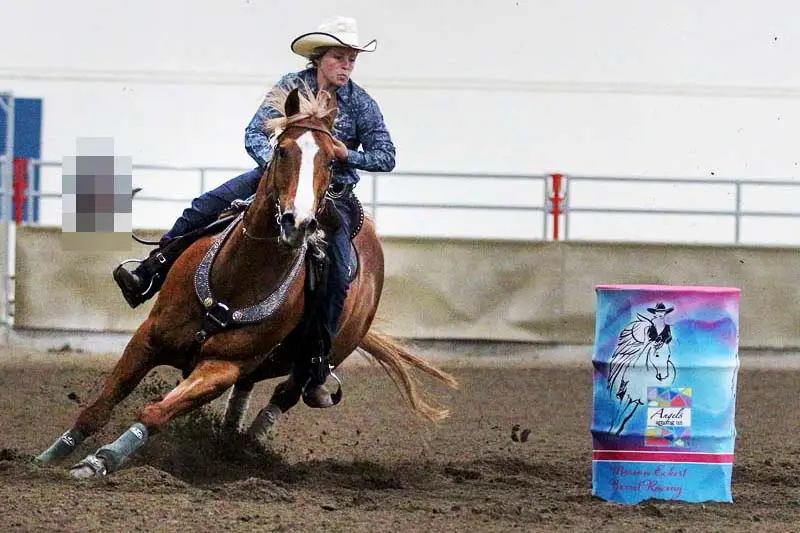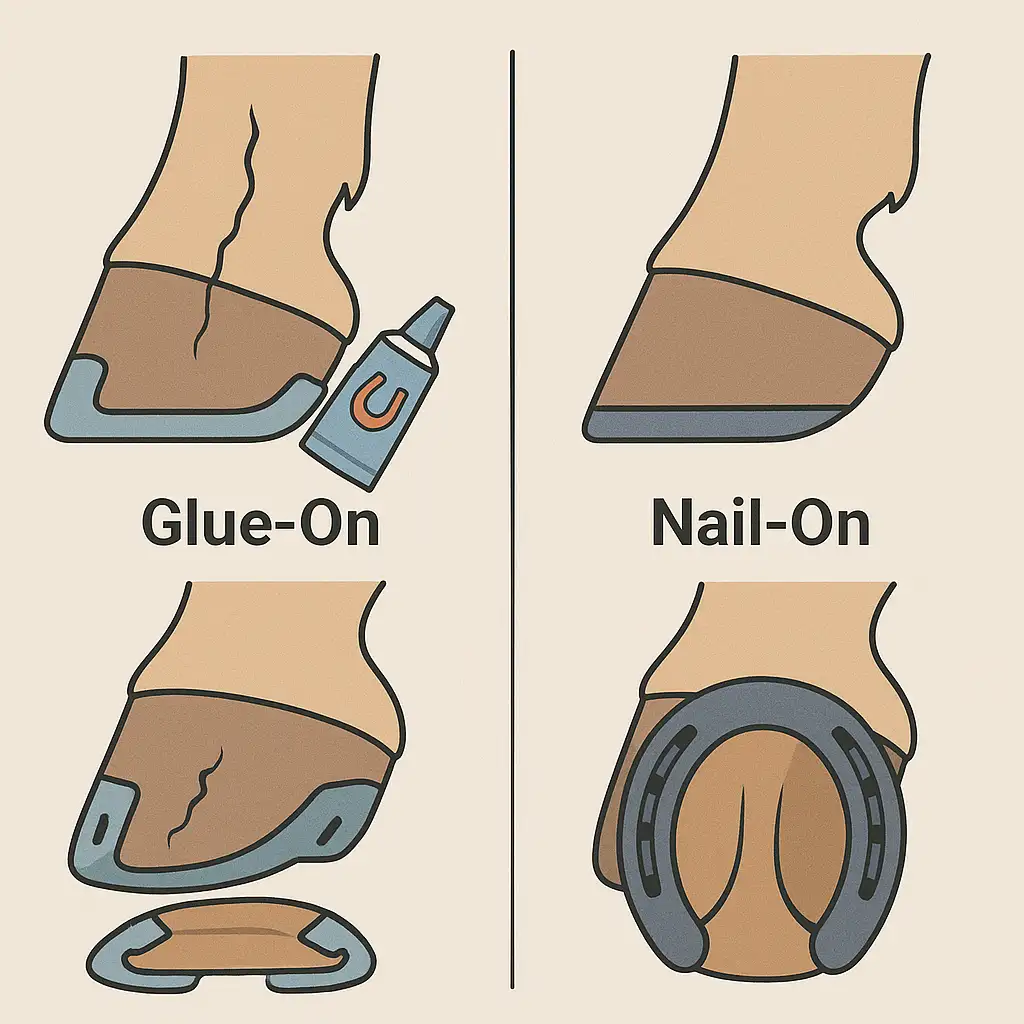Glue-on horseshoes have revolutionized hoof care for horses with sensitive, damaged, or tricky-to-shoe feet. But even the best glue-on shoes will fail if the hoof prep isn’t done right.
Many application failures come down to one issue: poor preparation.
Here’s how to make sure you’re setting your horse (and your glue-on shoes) up for success.
🚫 The #1 Rule: Moisture Is Your Enemy
Glue simply won’t bond to a hoof that’s:
- Wet
- Sweaty
- Oily
- Covered in conditioner or dirt
Common mistake:
Trying to glue on shoes right after a bath or without drying the hoof fully.
✅ Farrier tip:
- Use a heat gun or hairdryer to make sure the hoof is bone dry.
- Clean the hoof with isopropyl alcohol (not water).
- Avoid applying glue in humid or rainy weather if possible.
🪚 Rough It Up: Surface Prep Matters
Glue bonds best to a roughened surface.
Common mistake:
Applying glue to a smooth hoof wall or tab surface.
✅ Farrier tip:
- Rasp the hoof wall lightly to create texture.
- Sand the glue-on tab area of the shoe for extra grip.
- Remove any old glue residue completely before reapplying.
📏 Fit Before You Glue
It’s tempting to glue and go, but a poor fit = failure.
Common mistake:
Skipping a dry fit before glue application.
✅ Farrier tip:
- Always check fit before gluing.
- Adjust composite shoes with standard hoof tools as needed.
- Ensure the shoe sits flush against the hoof with no gaps or twists.
🧪 Choose the Right Glue
Not all adhesives are created equal.
Common mistake:
Using cheap or mismatched glue (e.g., wood glue, regular epoxy).
✅ Farrier tip:
- Use polyurethane or MMA hoof adhesives.
- Duplo’s Wolf Busch tabs are compatible with major glue systems like Equilox and Vettec.
🕒 Timing Is Everything
Glue has a working window — and environmental factors like temperature and humidity affect curing times.
Common mistake:
Not allowing glue to fully cure before turning the horse out.
✅ Farrier tip:
- Watch the glue’s manufacturer instructions carefully.
- In cooler temps, use a heat source to speed curing.
- Allow at least 30 minutes to fully cure before walking the horse.
🧼 Bonus: Keep the Work Area Clean
Dust, debris, or even loose hair can sabotage the bond.
✅ Farrier tip:
- Work in a clean, dry area.
- Have all tools ready to avoid delays.
- Wear gloves to avoid contamination.
🚀 The Takeaway
Glue-on shoes offer amazing benefits, but hoof prep is EVERYTHING. With careful preparation, you’ll get:
- Longer-lasting adhesion
- Happier, more comfortable horses
- Fewer mid-cycle shoe losses
👉 Want an easy-to-use glue-on system? Check out Duplo’s glue-on options with Wolf Busch tabs, designed for smooth application and reliable hold.

